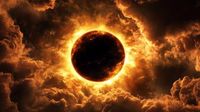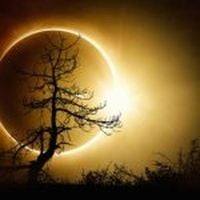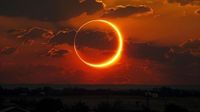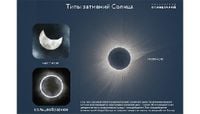On Saturday, March 29, 2025, residents of Earth will have the opportunity to witness the first solar eclipse of the year, a celestial event that promises to captivate skywatchers across various regions. This partial solar eclipse will last from 13:50 to 17:43 local time, with its peak occurring at 15:47. For those in northern regions, particularly in Russia, the conditions for viewing the eclipse are particularly favorable.
According to Muksun.fm, residents of Khanty-Mansiysk are in a prime position to see the moon partially cover the sun. The forecast indicates clear skies in the city, allowing for an unobstructed view of the phenomenon. Similarly, residents of Surgut can expect sunny weather during the eclipse, enhancing their chances of witnessing this astronomical occurrence. Nizhnevartovsk also offers a good opportunity, as clouds are expected to clear by midday, providing a clearer view as the eclipse unfolds.
The solar eclipse will be part of a corridor of eclipses that began with a lunar eclipse on March 14, 2025. This corridor will conclude with the solar eclipse, marking a significant moment in the astronomical calendar. The lunar eclipse was best observed in the East, and the solar eclipse is expected to be one of the most notable in many years, with its effects felt across various parts of the world.
During a solar eclipse, the moon's shadow partially or completely obscures the sun, creating a stunning visual effect that has fascinated humanity for centuries. The last time a similar event occurred, it was noted for producing a beautiful pink glow as the sun was obscured by the moon. This time, the eclipse will transform the sun into a crescent shape, with the degree of coverage varying by location.
In Russia, the best places to view the solar eclipse will be in the northern regions. For instance, in Murmansk, approximately 40% of the sun's diameter will be covered, while St. Petersburg will see around 20% coverage, and Moscow only about 6%. The eclipse will begin between 14:00 and 14:30 Moscow time, with the maximum phase occurring between 14:40 and 15:10, depending on the region.
Astrologers also suggest that solar eclipses can have an impact on zodiac signs, with the upcoming eclipse occurring while the sun is in the sign of Aries. Those born under this sign may experience a surge of energy and motivation during the eclipse, which is considered a favorable time for starting new projects or pursuing creative endeavors. The influence of the eclipse is expected to resonate differently across various zodiac signs, with fire signs like Aries, Leo, and Sagittarius particularly feeling the effects of this celestial event.
However, it is crucial to remember that viewing a solar eclipse without proper eye protection can lead to serious eye damage. Experts strongly advise using special eclipse glasses or solar filters to safely observe this remarkable event. Even welding glasses can provide adequate protection for those eager to witness the eclipse.
The solar eclipse on March 29 will not only be a beautiful sight but also a moment of reflection on the wonders of our universe. As the moon passes in front of the sun, casting its shadow on Earth, it serves as a reminder of the intricate dance of celestial bodies that has fascinated humanity for ages.
For those unable to witness this eclipse, the next notable partial eclipse in the European part of Russia will occur on August 2, 2027, followed by an annular eclipse on June 1, 2030, along the southern borders of Russia, from the Black Sea to Lake Baikal. Therefore, this March event is a unique opportunity for skywatchers, particularly in northern regions, to experience the beauty of a solar eclipse.
In conclusion, the solar eclipse on March 29, 2025, presents an exciting opportunity for residents across various regions, particularly in Russia, to engage with a spectacular celestial event. As the moon obscures the sun, viewers are encouraged to take the necessary precautions to ensure a safe and memorable experience.








